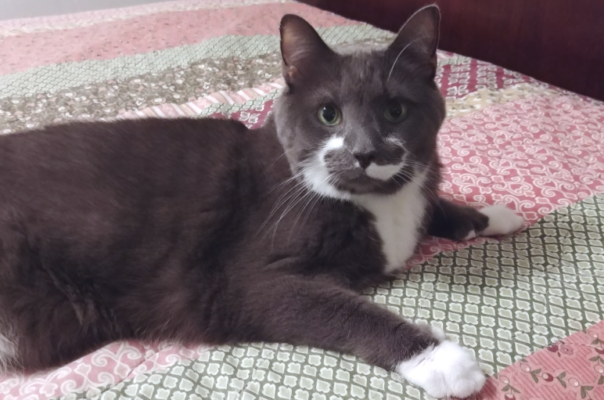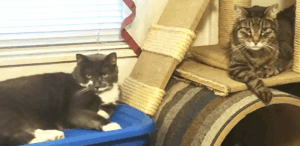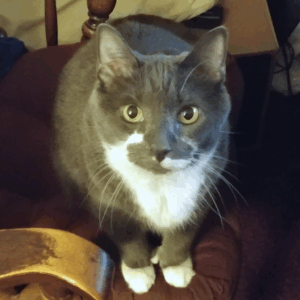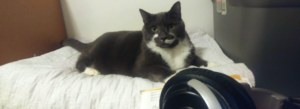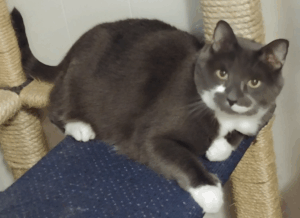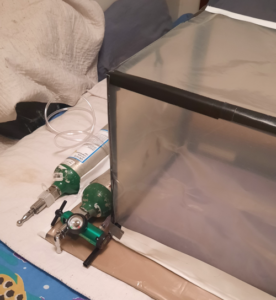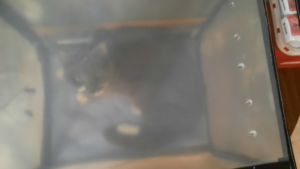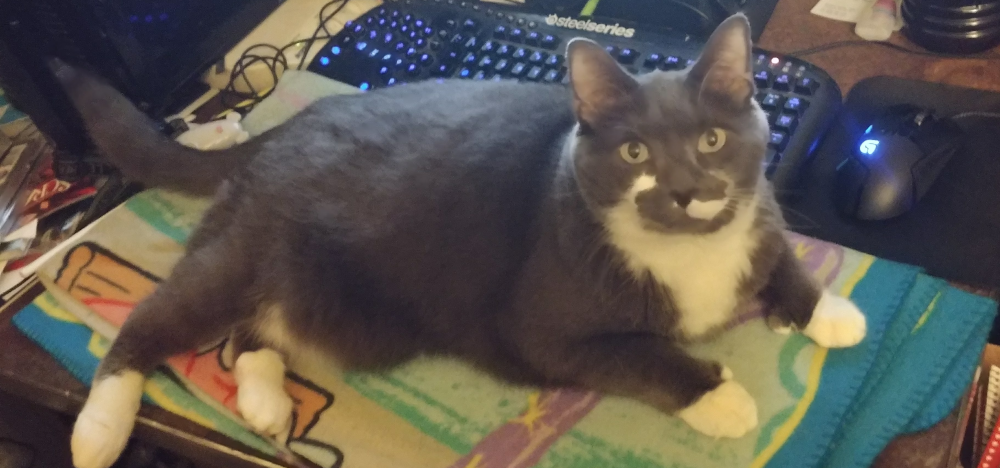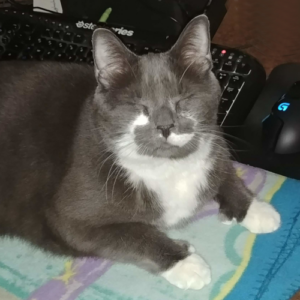 It’s with a extremely heavy heart that I make this post. After spending eight years of his life with us, Paws has passed away August 17th, 2023. His last few months with us were difficult for both him and us. He was struggling with several issues but he always showed us a positive side to his demeanor.
It’s with a extremely heavy heart that I make this post. After spending eight years of his life with us, Paws has passed away August 17th, 2023. His last few months with us were difficult for both him and us. He was struggling with several issues but he always showed us a positive side to his demeanor.
He was always gleeful and was always with us mentally and physically. Paws was always hanging with the family. He never let on he was suffering or uncomfortable. It was almost his inner pride showing through.
Paws has Weight Issues and New Friends
When we rescued Paws and his sister Belle, both cats were struggling with weight issues. Their previous owners had practiced free feeding – simply keeping bowls constantly filled with dry food that the cats could access whenever they wanted. This approach had led to weight gain for both cats, as the unlimited access to carb-heavy dry food affected their health and activity levels.
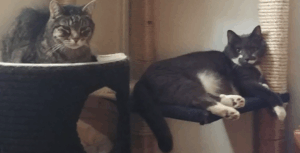 Unlike his more sociable sister Belle, Paws initially kept to himself when joining our home. He was hesitant around our other pets and had a distinctive warning behavior – firmly planting his paw on the ground, similar to what our previous cat Bam Bam used to do. This was his way of establishing boundaries and telling the other animals to keep their distance.
Unlike his more sociable sister Belle, Paws initially kept to himself when joining our home. He was hesitant around our other pets and had a distinctive warning behavior – firmly planting his paw on the ground, similar to what our previous cat Bam Bam used to do. This was his way of establishing boundaries and telling the other animals to keep their distance.
Though there was never any aggression involved, Paws needed time to adjust to his new environment. Having been the dominant one in his relationship with Belle, he now needed to find his place among our other pets. Eventually, his cautious nature gave way to friendship, and Paws formed bonds with everyone in our home, from Bubbles to Bentley.
Paw Starts to Show Signs of High Blood Pressure
Throughout his time with us, Paws had been relatively healthy until we noticed something alarming – a burst of blood in his eye. We immediately took him to the veterinarian, who checked his blood pressure and determined it was elevated. The diagnosis was clear: Paws had experienced a blood pressure spike during the night, causing a blood vessel in his eye to rupture.
This type of ocular hemorrhage, while concerning, isn’t uncommon in cats and often serves as an important indicator of hypertension. However, it’s worth noting that there can be other causes for such symptoms, which is why veterinary evaluation is always essential. Though Paws’ blood pressure wasn’t extremely high during his examination, the vet prescribed medication as a precautionary measure. Fortunately, this initial treatment appeared effective – he never experienced another eye hemorrhage, suggesting his blood pressure spikes had been controlled.
Despite this improvement, subsequent veterinary visits revealed that Paws’ blood pressure wasn’t being fully regulated by the single medication. The veterinarian decided to add a second blood pressure medication to his regimen, which helped stabilize his condition. While combining blood pressure medications is a common approach for feline hypertension, it necessitates regular monitoring that can only be done at a veterinary office, as blood pressure equipment for small animals requires specialized tools and expertise.
More Health Issues Rear Their Ugly Head
In his final months with us, Paws faced several significant health challenges. At twenty years old, he had developed a fatty tumor on his chest that had been under treatment for several months. After numerous veterinary consultations, direct injections became the preferred treatment approach, as chemotherapy and radiation weren’t recommended due to his advanced age. Before trying the injections, we had attempted treatment with a chemotherapy pill called Prednisone, but after a month or two, it became clear this wasn’t improving his condition.
Given Paws’ considerable age, we carefully weighed our treatment options. We avoided certain interventions that might be too risky for a senior cat with a tumor. The potential complications of some treatments—particularly those requiring anesthesia or sedation—could pose greater dangers than the condition itself, potentially even leading to his death.
Paws’ daily medication regimen had become quite complex by this time. He was taking Methimazole for his hyperthyroidism and Cerenia to control his vomiting. For his hypertension, he was prescribed Pimobendan, which at one point was administered in combination with Atenolol. However, this combination led to troublesome diarrhea—a side effect we discovered through research affects some cats when these medications are used together. We replaced the Atenolol with Amlodipine, which resolved the intestinal issues within a week and noticeably improved Paws’ overall demeanor. After all, a cat suffering from diarrhea is undoubtedly an unhappy cat.
Muscle Mass and Appetite
As Paws’ health declined, we added Prednisolone, a steroid, to his treatment regimen. We introduced this medication when we noticed him growing weaker and losing muscle mass. The Prednisolone served multiple purposes – it stimulated his appetite, helped rebuild muscle tissue, and supported healthy weight gain. When Paws developed infections requiring antibiotics, his veterinarian prescribed Metronidazole.
Weight maintenance becomes critically important when cats are battling illness, particularly in senior cats like Paws. When cats lose weight due to disease, they’re not just losing fat – they’re often losing vital muscle mass as well. This muscle wasting, known medically as cachexia, can significantly impact a cat’s quality of life, mobility, and ability to fight illness.
The body requires proper nutrition and adequate calories to maintain immune function and repair damaged tissues. Without sufficient nutritional reserves, cats can enter a dangerous downward spiral where weakness leads to reduced eating, causing further weight loss and decreased strength to fight disease. Paws responded well when he was gaining weight here.
Given Paws’ advanced age, surgical interventions carried excessive risk. Similarly, traditional chemotherapy presented dangers that outweighed potential benefits. After trying oral chemotherapy pills with limited success, we pursued an alternative treatment where the veterinarian administered injections directly into the fatty tumor. These injections initially appeared to stabilize Paws’ condition, but after several months of treatment, we observed a gradual deterioration in his overall health.
Paws Struggles to Breathe
Over time, we noticed Paws developing breathing difficulties that prompted several veterinary visits. These examinations revealed an unusual condition for cats – Pneumothorax, characterized by air bubbles in his chest cavity. The cause of this condition wasn’t immediately clear, which led us to consider several possibilities.
One potential explanation was physical trauma to his chest. Though we hadn’t witnessed any specific incident, Paws frequently enjoyed climbing the various cat trees throughout our home. It seemed plausible that he might have fallen from one of these elevated perches without our knowledge. Another theory suggested that the tumor on his chest might somehow be introducing air into his chest cavity. This concerning possibility led us to reconsider surgical intervention, despite our previous reservations.
While we never definitively identified the cause of Paws’ pneumothorax, we took immediate precautionary measures. We observed that Paws had recently been staying in his lower sleeping spots rather than his usual high perches, which supported our fall theory. As a preventive step, we restricted his access to elevated areas throughout the house. Fortunately, these measures seemed effective – the air in his chest cavity gradually dissipated — good news at the time.
Our relief was short-lived, however. After approximately one to two months, Paws’ breathing problems resurfaced, prompting another veterinary appointment. The examination confirmed our fears – air had once again accumulated in his chest cavity. Initially, we remained hopeful that, as before, the condition would resolve itself with time and care. Unfortunately, as days passed, it became increasingly apparent that Paws’ condition was deteriorating rather than improving.
Belle Starts Hanging With Paws More Often
Belle began exhibiting what we recognized as her “concerned visit routine” – a behavior she consistently displayed whenever another pet in our household fell ill. She started spending significantly more time with Paws, offering companionship that was both heartwarming and concerning. Eventually, Everly also adopted this nurturing behavior, joining Belle in looking after Paws.
During this period, Paws’ breathing difficulties were worsening noticeably. The veterinarian recommended oxygen therapy as treatment, which initially involved taking Paws to the clinic to spend time in an oxygen chamber. While these treatments proved beneficial, the logistics and costs of frequent veterinary visits quickly became prohibitive. With limited options available, we needed to find an alternative approach to manage his care.
Oxygen Treatment for Paws
Our veterinarian generously loaned us their older oxygen chamber, which had some structural issues and was leaking. Since the clinic could administer oxygen to animals using masks when necessary, they didn’t immediately need the chamber. Fortunately, we had access to compressed oxygen tanks, and I believed we could repair the chamber for Paws’ treatments at home.
While working on the chamber repairs, we implemented the mask method our veterinarian had described. We fashioned a makeshift mask using a plastic cone held near Paws’ face, which delivered impressive results. After each treatment, Paws appeared more comfortable and energetic, though his breathing difficulties would gradually return throughout the day, necessitating daily treatments. Despite the inconvenience, Paws adjusted well to this routine, sitting calmly during treatments. For anyone who has witnessed an animal struggling to breathe, the visible stress is apparent, raising immediate concerns about quality of life.
Meanwhile, I examined the borrowed oxygen chamber. The veterinarian had explained that it leaked substantially, wasting much of the oxygen. I focused on repairing the chamber since Paws responded better to complete chamber treatments than to the mask approach. I sealed the larger tears with wide transparent tape, being careful to maintain the necessary ventilation holes for air exchange – the goal was to create oxygen-enriched air rather than a pure oxygen environment. I also reinforced collapsing areas of the structure, essentially creating a square oxygen tent that maintained proper oxygen levels while allowing necessary air flow.
With access to tanked oxygen and the repaired chamber, we transitioned Paws from mask treatments to the more effective chamber therapy. This arrangement worked excellently until the veterinary clinic requested the chamber’s return. They had received another patient requiring oxygen therapy, and while mask treatments were being used, the sealed chamber would provide superior results for this animal, prompting their request.
Building Our Own Oxygen Chamber For Paws
Anticipating the eventual return of the borrowed oxygen chamber, I began gathering materials to construct our own version for Paws. Having built all the cat trees in our home, I was confident in my ability to replicate the chamber’s functionality. I studied the veterinary unit’s design carefully, identified the necessary components, and began assembling our homemade version. The timing worked out perfectly, as our veterinarian had just requested their chamber back for another patient who needed treatment.
The transition between chambers was seamless – we returned the newly-repaired veterinary unit and immediately implemented our custom-built replacement, ensuring Paws experienced no interruption in his therapy schedule. This arrangement benefited everyone involved: the veterinary clinic regained their now-sealed and fully functional equipment for immediate use with other patients, while Paws continued receiving his essential treatments without disruption.
With our home system in place, Paws received regular oxygen therapy that appeared to stabilize his condition. After each treatment, he would display renewed energy – walking around the house, greeting other family members, and eventually settling into his favorite chair where he could observe household activities before drifting off to sleep. These peaceful moments allowed us to enjoy his company just as much as he seemed to enjoy ours.
We remained attentive to Paws’ breathing patterns throughout the day, sometimes administering a second, shorter treatment when he showed signs of respiratory distress. The oxygen therapy was primarily about proper timing and observation – when we noticed labored breathing, a supplemental dose would produce immediate improvement in his demeanor and comfort level. This flexible approach to his care seemed to provide the perfect balance for managing his condition.
Paws Starts Going Downhill
Then came a morning when Paws appeared unusually fatigued. While some tiredness before his oxygen treatments was normal—followed by the encouraging post-treatment energy we’d come to recognize as a sign of stabilization—this particular day felt different. His exhaustion seemed more profound, prompting us to administer his oxygen therapy earlier than scheduled. The concerning moment came when, after treatment, instead of making his way to his usual chair, he remained lethargic and retreated to the bed beneath his normal resting spot. This deviation from his established pattern made it clear he wasn’t responding to the oxygen as he typically would, triggering our immediate concern.
We contacted the veterinarian without delay, securing an appointment for that afternoon. As Paws’ breathing difficulties intensified, we returned him to the oxygen chamber for comfort while awaiting his appointment. Recognizing the urgency of his condition, the clinic moved our appointment to an earlier time slot. At this juncture, the reality began to settle in—Paws might not recover from this episode. With his quality of life uppermost in our minds, we reluctantly began considering euthanasia as the compassionate option for our beloved companion.
When the time for Paws’ appointment arrived, we gently removed him from his oxygen chamber and wrapped him in his favorite blanket before hurrying to the veterinary clinic, about 15-20 minutes away. During the journey, his breathing became increasingly labored, his distress growing more apparent with each passing moment. We spoke to him continuously, offering whatever comfort our voices could provide, even as our own anxiety mounted. Then, approximately one mile from our destination, Paws experienced what appeared to be a mild spasm—a moment we now believe marked his peaceful passing. Still cradling his warm little body, we pulled urgently into the veterinary parking lot and rushed inside the facility we had come to know all too well.
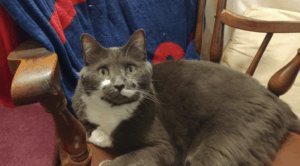 In the familiar waiting room, time seemed suspended until the veterinarian appeared just moments later with the heartbreaking confirmation that Paws had indeed passed away. It stands as one of the most profoundly sorrowful days we’ve ever experienced. This remarkable little companion who had brought immeasurable love and joy into our lives was suddenly gone. The devastation was overwhelming—even now, recounting these moments brings tears. Our love for him was, and remains, immense beyond words.
In the familiar waiting room, time seemed suspended until the veterinarian appeared just moments later with the heartbreaking confirmation that Paws had indeed passed away. It stands as one of the most profoundly sorrowful days we’ve ever experienced. This remarkable little companion who had brought immeasurable love and joy into our lives was suddenly gone. The devastation was overwhelming—even now, recounting these moments brings tears. Our love for him was, and remains, immense beyond words.
Returning Home Without Paws
The journey home without Paws was as heartbreaking as his final moments. Returning to an emptier house, we found our other pets immediately sensing something was wrong. As we sat in the living room, tears flowing freely, visibly grief-stricken, our animal family gathered around us—a testament to the loving bonds we shared. They instinctively offered comfort, surrounding us as we processed our profound loss.
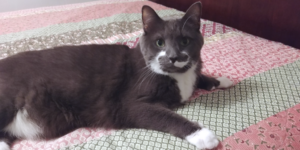 Belle, Paws’ sister, seemed to understand the gravity of what had happened more deeply than the others. Her grief manifested undeniably in the weeks and months that followed. She retreated to unfamiliar sleeping spots, isolating herself in a manner completely contrary to her normally social nature. Having been exceptionally attentive during Paws’ illness—staying by his side, offering her healing presence—Belle now exhibited clear signs of mourning. Though she eventually emerged from her depression, we remained certain she comprehended that Paws was gone forever.
Belle, Paws’ sister, seemed to understand the gravity of what had happened more deeply than the others. Her grief manifested undeniably in the weeks and months that followed. She retreated to unfamiliar sleeping spots, isolating herself in a manner completely contrary to her normally social nature. Having been exceptionally attentive during Paws’ illness—staying by his side, offering her healing presence—Belle now exhibited clear signs of mourning. Though she eventually emerged from her depression, we remained certain she comprehended that Paws was gone forever.
Belle’s empathetic nature had always been remarkable. Throughout Paws’ decline, she had maintained a vigil beside him, as she had done with every sick pet in our care. This extraordinary cat seemed to share in their suffering, remaining steadfastly present until they recovered. Now, with Paws’ permanent absence, her understanding of the situation was reflected in her demeanor and emotional state. She extended her compassion to us as well, invariably appearing whenever our grief resurfaced in tears—tears that still come, accompanying the immense void Paws left behind.
As a web developer, I felt Paws’ absence particularly during my coding sessions. He had been my faithful companion during countless late nights and early mornings at the computer. Whenever he wanted attention, he would simply position himself directly on my keyboard, prompting me to eventually place a blanket nearby as an alternative resting spot. I’d pause work to give him affection and conversation—he was truly the perfect coding partner.
We’ll forever cherish memories of Paws’ joyful spirit. His perpetually happy demeanor and friendly disposition endeared him to every pet he encountered. His accommodating, easy-going nature made for countless photographs where he appeared to be smiling. From the moment he joined our family, he integrated seamlessly, behaving as though he had always belonged in our home.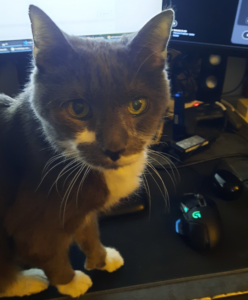
We strived to return the love he so generously offered. As web developers working from home, one of us was always present to provide the attention and care our pets deserved. We believe Paws recognized and appreciated this dedication—perhaps explaining his seemingly perpetual happiness despite his health challenges.
After cremation, Paws now rests with our other departed family members in a special memorial area in our home. Though physically gone, he remains vividly present in our hearts and thoughts each day. We will forever miss our special little companion who, regardless of how poorly he felt, always managed to find a smile for us.


